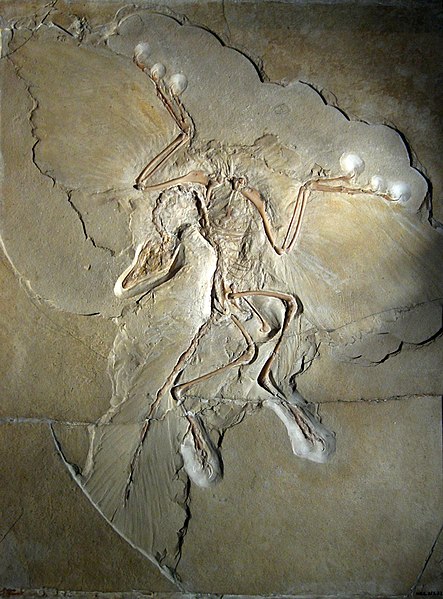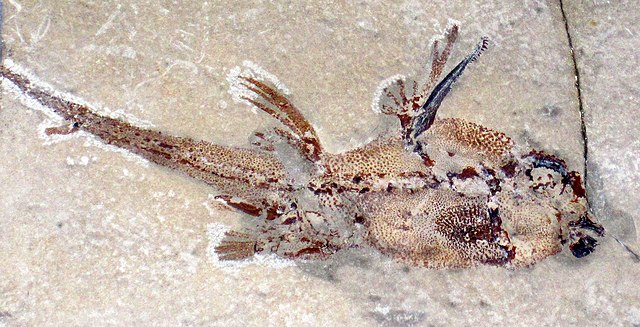The Mazon Creek fossil beds are a conservation lagerstätte found near Morris, in Grundy County, Illinois. The fossils are preserved in ironstone concretions, formed approximately 309 million years ago in the mid-Pennsylvanian epoch of the Carboniferous period. These concretions frequently preserve both hard and soft tissues of animal and plant materials, as well as many soft-bodied organisms that do not normally fossilize. The quality, quantity and diversity of fossils in the area, known since the mid-nineteenth century, make the Mazon Creek lagerstätte important to paleontologists attempting to reconstruct the paleoecology of the sites. The locality was declared a National Historic Landmark in 1997.
Tullimonstrum gregarium, an enigmatic soft bodied bilaterian animal known only from the Mazon Creek deposits.
Bandringa rayi fossil shark, Mazon Creek Lagerstatte. This is the holotype specimen of the species. Its size and lack of developed cartilaginous skeletal structures indicate that this is a juvenile.
A Fossil-Lagerstätte is a sedimentary deposit that exhibits extraordinary fossils with exceptional preservation—sometimes including preserved soft tissues. These formations may have resulted from carcass burial in an anoxic environment with minimal bacteria, thus delaying the decomposition of both gross and fine biological features until long after a durable impression was created in the surrounding matrix. Fossil-Lagerstätten span geological time from the Neoproterozoic era to the present.
Well-preserved basal arthropod Opabinia from Burgess Shale Lagerstätte (Middle Cambrian)
Archaeopteryx specimen from Solnhofen Lagerstätte (Upper Jurassic)
Fossil specimen of Echinochimaera from the Bear Gulch Limestone (Middle Carboniferous)
An early Stromatolite






